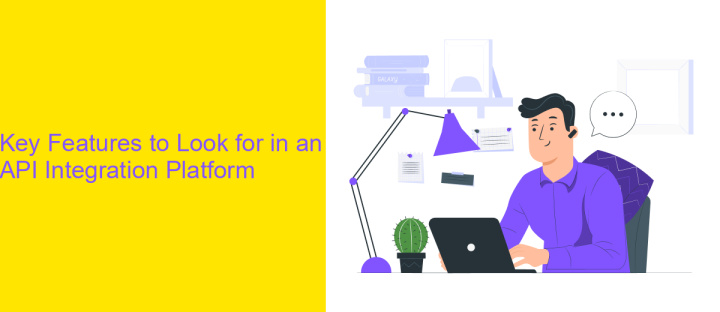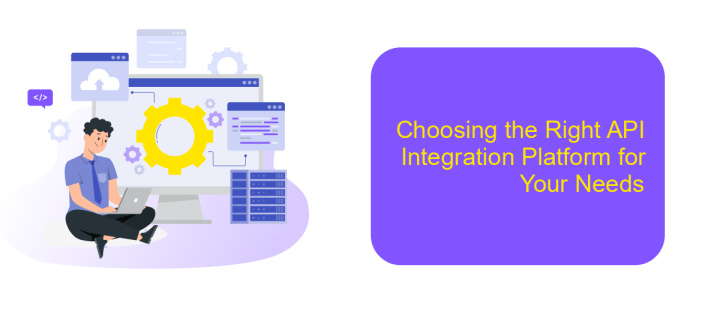Top API Integration Platforms
In today's rapidly evolving digital landscape, API integration platforms have become essential tools for businesses seeking to streamline operations and enhance connectivity. These platforms allow for seamless communication between diverse software applications, enabling companies to automate workflows, improve data sharing, and boost overall efficiency. This article explores the top API integration platforms available, highlighting their key features and benefits to help you choose the best solution for your needs.
Introduction: The Importance of API Integration Platforms
In today's rapidly evolving digital landscape, API integration platforms have become essential tools for businesses looking to streamline operations and enhance connectivity. These platforms enable seamless communication between disparate software systems, allowing organizations to automate processes and improve efficiency. By leveraging API integration platforms, companies can unlock new opportunities for innovation and growth, ensuring they remain competitive in a technology-driven world.
- Facilitates seamless data exchange between applications
- Enhances operational efficiency by automating workflows
- Enables scalability and flexibility for growing businesses
- Supports digital transformation initiatives
- Improves customer experiences through integrated services
As businesses continue to embrace digital transformation, the role of API integration platforms becomes increasingly pivotal. These platforms not only bridge the gap between various software applications but also empower organizations to adapt to changing market demands swiftly. By investing in robust API integration solutions, companies can ensure they harness the full potential of their technological ecosystems, driving success and fostering innovation in an ever-connected world.
Key Features to Look for in an API Integration Platform

When selecting an API integration platform, one of the primary features to consider is ease of use. The platform should offer a user-friendly interface that simplifies the process of connecting various applications and services. This is particularly beneficial for businesses that lack extensive technical expertise. For instance, platforms like ApiX-Drive provide intuitive, no-code integration solutions that enable users to automate workflows without needing to write a single line of code. This ease of use ensures that organizations can quickly adapt and scale their integration needs as they grow.
Another essential feature is the platform's compatibility and flexibility. It should support a wide range of APIs, allowing for seamless integration across different systems and applications. Additionally, robust data transformation and mapping capabilities are crucial, enabling the platform to handle complex data formats and structures efficiently. Security is also a paramount concern; therefore, the platform must offer strong data protection measures, such as encryption and compliance with industry standards. By prioritizing these features, businesses can ensure that their API integration platform not only meets their current needs but is also prepared for future technological advancements.
Top API Integration Platforms: A Comparative Overview

In the rapidly evolving digital landscape, API integration platforms have become essential for businesses seeking seamless connectivity between various software applications. These platforms enable organizations to streamline operations, enhance productivity, and foster innovation by facilitating smooth data exchange. As the demand for efficient API management grows, selecting the right platform becomes crucial for achieving optimal integration outcomes.
- MuleSoft Anypoint Platform: Known for its robust capabilities, MuleSoft offers comprehensive tools for API design, management, and analytics.
- Zapier: Ideal for non-developers, Zapier provides an intuitive interface for automating workflows across numerous applications.
- Postman: A popular choice for developers, Postman excels in API testing and collaboration, making it indispensable for development teams.
- Apigee: A Google Cloud product, Apigee is renowned for its powerful API management features and scalability.
- IBM API Connect: This platform offers end-to-end API lifecycle management, ensuring security and governance at every stage.
Choosing the right API integration platform depends on specific business needs, technical requirements, and budget constraints. Each platform offers unique features tailored to different user profiles, from developers to business professionals. Evaluating these options carefully will empower organizations to harness the full potential of their digital ecosystems, driving growth and efficiency.
Choosing the Right API Integration Platform for Your Needs

When selecting an API integration platform, it's essential to consider your specific business requirements and technical capabilities. The right platform can streamline operations, enhance connectivity, and drive innovation. Begin by assessing your current infrastructure and identifying the gaps that an API integration platform could fill.
Next, evaluate the ease of use and flexibility of potential platforms. A user-friendly interface and robust support can significantly reduce the learning curve and implementation time. Additionally, consider the platform's scalability to ensure it can grow alongside your business needs and accommodate future demands.
- Compatibility with existing systems and applications
- Security features and compliance with industry standards
- Cost-effectiveness and pricing models
- Customer support and community resources
- Integration capabilities with third-party services
Ultimately, the best API integration platform aligns with your strategic goals and enhances your operational efficiency. Take the time to research and test different options, seeking feedback from stakeholders to ensure the chosen solution meets the diverse needs of your organization. A well-informed decision will set the foundation for seamless integration and long-term success.
Future Trends in API Integration
As we look towards the future of API integration, several trends are set to shape the landscape. One significant trend is the increasing adoption of low-code and no-code platforms, which enable businesses to create and manage integrations without extensive programming knowledge. This democratization of technology allows more organizations to leverage APIs efficiently, reducing the time and cost associated with traditional development. Platforms like ApiX-Drive are at the forefront of this movement, offering user-friendly interfaces that simplify the integration process, empowering even non-technical users to connect various applications seamlessly.
Another trend is the growing emphasis on real-time data processing and integration. As businesses strive to remain competitive, the demand for instantaneous data exchange between systems is rising. This shift is driving the evolution of APIs towards more event-driven architectures, where data is processed and transmitted in real-time. Additionally, the increased focus on security and compliance is prompting API providers to enhance their authentication and authorization mechanisms, ensuring that data remains protected as it flows across different platforms. These trends collectively indicate a future where API integrations are more accessible, efficient, and secure than ever before.
FAQ
What is an API integration platform?
How do API integration platforms work?
What are the benefits of using an API integration platform?
Can API integration platforms be used by non-developers?
How secure are API integration platforms?
Time is the most valuable resource in today's business realities. By eliminating the routine from work processes, you will get more opportunities to implement the most daring plans and ideas. Choose – you can continue to waste time, money and nerves on inefficient solutions, or you can use ApiX-Drive, automating work processes and achieving results with minimal investment of money, effort and human resources.

